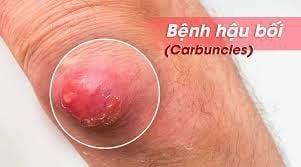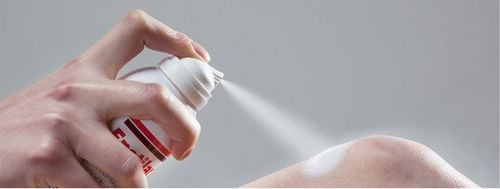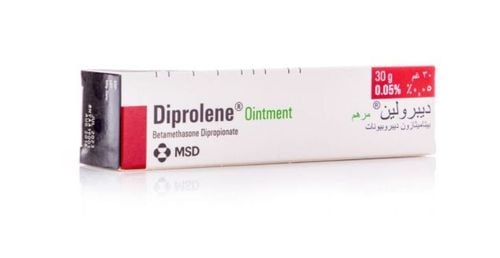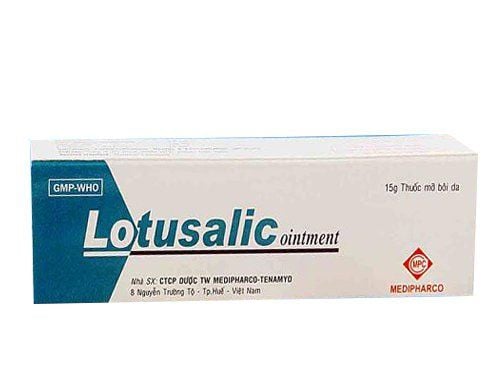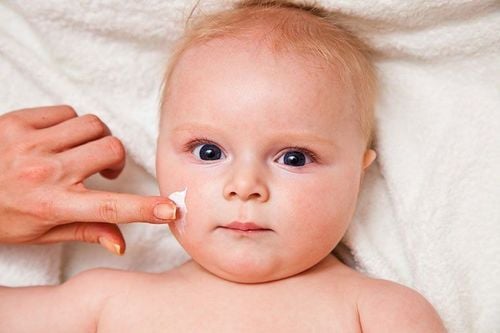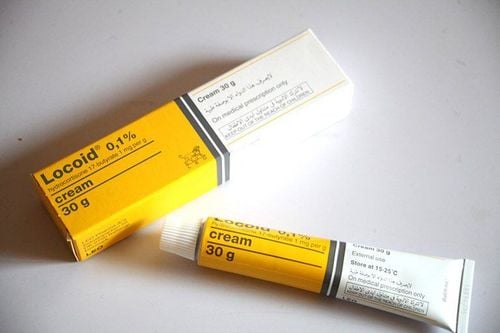This is an automatically translated article.
The article was professionally consulted by Specialist Doctor I Tran Van Sang - Dermatologist - Department of Medical Examination & Internal Medicine - Vinmec Danang International General Hospital. The doctor has 18 years of experience in the field of Dermatology.Folliculitis is a disease that often occurs in moist skin areas such as armpits, groin, buttocks or arms, back, thighs, ... Although not a dangerous disease, folliculitis causes a significant impact on the quality of life. patient's life. In particular, the disease is easy to catch, easy to recur and the treatment is often long and persistent.
1. What is folliculitis?
Folliculitis is a fairly common skin disease, caused by bacteria, viruses, or fungi that infect the hair follicles. Folliculitis can occur in all areas of skin with hair on the body such as armpit folliculitis, scalp folliculitis, arms, legs ... and often appears in the hot season because the skin is moist by sweat , poor hygiene.Folliculitis causes skin damage, manifested by pustules, pustules in the hair follicles, surrounded by a red inflammatory halo, hairs can be seen growing under the skin causing itching. The red spots that grow around the inflamed area are not large but dense, causing unsightly and affecting the patient's activities. Common sites of folliculitis are the scalp, face, armpits, pubic region, and extensor surfaces of the extremities. When the acne breaks, it will leave small, scaly spots, which can turn into boils, more seriously, boils, potholes or inflammation of the subcutaneous tissue. The disease is often itchy and often relapsing.
2. Manifestations of folliculitis
Folliculitis is classified based on the depth and extent of the inflammation. Specific manifestations of each type are as follows:Superficial folliculitis (stomatitis of hair follicles): Is an inflammatory phenomenon located in the neck of hair follicles, often in the scalp or extremities. Causes of superficial folliculitis are caused by Staphylococcus aureus or exposure to chemicals that clog the hair follicle neck. The disease is mainly seen in young children and people who use corticosteroids for a long time. Symptoms of the disease are pustules pyramidal, the size of a pinhead, with a yellow dot in the middle, surrounded by a red halo, causing itching. Pustules grow in waves, lasting about 7-10 days, leaving no scars. In some cases, the disease may persist and become chronic; Deep folliculitis: Inflammation spreads deep down the hair follicle, causing greater damage than superficial folliculitis. The purulent lesions do not burst, but collapse, scab, then the scab peels off, leaving a concave scar. The patient has pain in the inflamed area; Boils: Is an acute, necrotic folliculitis caused by staphylococcus aureus, there may be 1 or more boils scattered or clustered. Lesions caused by boils spread to the skin covering the hair follicles, necrosis of the tissues, turning into yellow-green pus. When the pus nib bursts, it leaves a deep ulcer, which later heals into a scar. The disease is common in young men, men, occurring mainly on the face, neck, hands and buttocks; Postpartum: There is an inflammation of an adjacent hair follicle due to Staphylococcus aureus, the lesion spreads to both connective tissue and subcutaneous adipose tissue. The disease is mainly seen in people with diabetes, malnutrition, heart failure,... Initial lesions are a cluster of red, inflamed skin, raised, solid surface, smooth, painful when pressed. After about 3 - 5 days, the lesion gradually enlarges, can reach 10cm in diameter. After about 7-10 days, the lesions soften and turn pus, pus exits through the mouth of the hair follicles. Sometimes the injured area is necrotic, forming deep ulcers, with a lot of pus at the bottom, causing pain, high fever, fatigue, loss of appetite,...; Beard nail: This is a type of boil that appears on the face. Bacteria can follow the blood stream from the vascular region to the venous sinuses of the brain and cause infection. The patient, if not promptly treated, can become comatose and even die; Sycosis: Subacute or chronic purulent inflammation of the entire hair follicle caused by Staphylococcus aureus or the patient's own site. The disease recurs persistently in the areas of dense hair, eyebrows, head area, chin edge, genitals, ... Manifestations of the disease are progressive pustules, eczema-like patches, and clustered acne. The pustules lie deeper, forming many small, raised, well-defined tumors, when pressed, the pus flows out, the pores widen. .
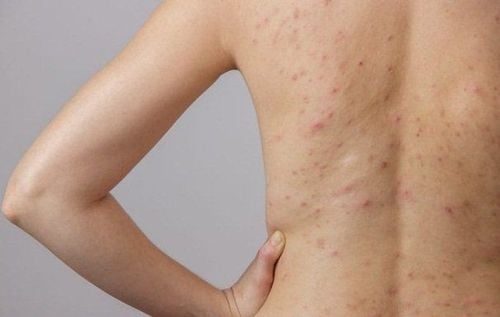
3. Why does folliculitis persist and recur easily?
Although folliculitis is not dangerous, it is persistent and easy to recur. The reason is that disease-causing factors always exist around us and are difficult to completely eliminate. Specifically:Oil gland disorders: Overactive oil glands or increasingly sticky oil will cause occlusion, sealing hair follicles, hindering hair growth. Dead cells accumulate in the hair follicle, sealing the hair follicle and causing inflammation. In addition, folliculitis can also be caused by an imbalance in acidity, which accelerates water loss in the skin, creating favorable conditions for bacteria to grow, causing inflammation inside the hair follicle. This problem is mainly due to the genetic inheritance of oily skin from parents to children. This is a genetic cause, so it is very difficult to completely eliminate. That is the reason why folliculitis is persistent and easy to recur; Causes inside the body: Weakened immune system, neurological disorders, metabolic disorders, endocrine diseases, gastrointestinal diseases, diabetes, ... are diseases that increase the risk of inflammation hair follicles. If the above diseases are not thoroughly treated, folliculitis will be persistent, difficult to cure completely and easily recur many times; Disease-causing factors: People living in areas with hot climate, high humidity, polluted environment, dust, ... have a high risk of folliculitis. And this is also a cause that is difficult to control, so it is difficult to cure folliculitis thoroughly, the disease is easy to recur; Bad habits: Shaving, plucking or waxing, using synthetic clothing, prolonged use of topical corticosteroids, long-term antibiotic use, skin-tight bandages, etc. can easily cause folliculitis. hair. If you do not change your lifestyle habits or treat them improperly, the disease will persist and recur many times.

4. Is it difficult to treat folliculitis?
Folliculitis is not difficult to treat. It is important for the patient to go to the doctor, perform tests to identify the causative agent and use the appropriate treatment.Development of persistent folliculitis, or recurrence due to favorable factors such as genetics, environment or inappropriate lifestyle habits. In addition, many patients relapsed from folliculitis due to quitting midway, without proper treatment. Complications that can be more serious are boils, boils and inflammation of the subcutaneous tissue. Then, the treatment will be more difficult. Therefore, patients need to improve their living environment, change their living habits to reduce the risk of disease, and use drugs exactly as prescribed by the doctor to treat the disease completely.
Specific treatment for folliculitis for each type of folliculitis is:
Superficial folliculitis: Apply an antiseptic solution to the damaged area; Deep folliculitis: Apply an antiseptic solution to the area with widespread inflammation, combined with oral antibiotics; Boils and pustules: Use local and systemic antibiotics, when there is pus, it is necessary to make an incision to remove the pus; Nail beard: Combination therapy with multiple parenteral antibiotics; Sycosis: Antibiotic treatment combined with local changes with histamine and staphylococcal vaccine. In cases of folliculitis or recurrence, it is necessary to find the cause, detect the bacteria in the nasal cavity, anus, ... and avoid scratching the skin due to shaving. Patients absolutely do not use drugs of unknown origin to avoid causing more widespread damage, making the disease worse and difficult to treat definitively.
5. How to prevent recurrent folliculitis
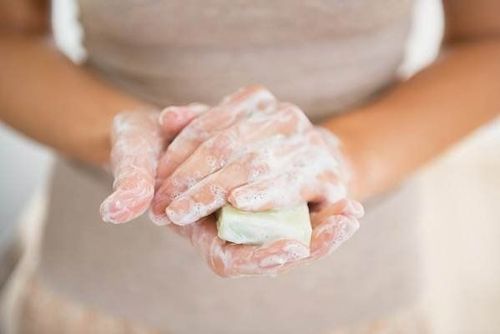
Enhance body hygiene, keep skin dry in the summer. It is recommended to use soaps that help reduce sebum and help open pores; Protect skin against soaps, chemicals, detergents with irritating ingredients; Do not wear tight hats, wear tight clothes, difficult to absorb sweat, should wear comfortable cotton clothes; Cleanse the skin before shaving Avoid scratching the skin when shaving Do not pluck nose hair, armpit hair... In the diet should reduce starch, sugar, increase vitamin B group, drink lots of water to ensure adequate nutrition for healthy skin; When there are symptoms of folliculitis, you should go to a specialist dermatology facility, and at the same time strictly follow the doctor's treatment instructions so that the disease will heal quickly and not recur. Folliculitis is a disease that is difficult to treat definitively, is persistent and easy to recur. Therefore, it is best for each person to pay attention to preventive measures to reduce the risk of contracting this disease. When unlucky, the patient needs to coordinate with the doctor to treat the disease completely and avoid recurrence.
At Vinmec International General Hospital, there is a package of examination and advice on treatment of atopic dermatitis for all customers of all ages. Customers at risk such as allergies, affected by ambient conditions such as weather, climate, humidity, ... will be examined and tested including:
Specialist examination Dermatology Perform tests such as: quantification of IgE, fresh mycobacteria, specific IgE for respiratory and food allergens (Panel 1 Viet), Rida Allergy Screen test (panel 1). ..
Please dial HOTLINE for more information or register for an appointment HERE. Download MyVinmec app to make appointments faster and to manage your bookings easily.





